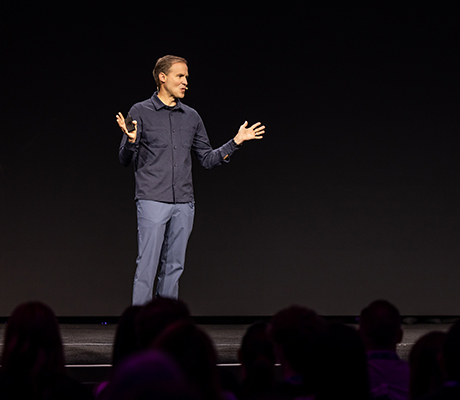Brands, meet your new customer: How ChatGPT is changing online shopping
Editor's note: This article was written by Jacob Miller, Vice President of Data Science at Pattern. With deep expertise in ecommerce analytics and applied AI, Jacob helps brands unlock actionable insights and stay ahead of the curve.
On September 29th, OpenAI announced a partnership with Shopify, Etsy, and Stripe called Instant Checkout. The integration allows users to discover and purchase products directly within ChatGPT. What once required switching between multiple platforms can now happen in a single conversation.
For U.S. users, this means they can browse, select, and complete purchases without leaving the chat. Payments and order fulfillment continue to run through each merchant’s existing systems, but the experience is unified in one place.
The development signals a broader shift in how people find and decide what to buy. It moves online shopping further away from fragmented browsing and closer to an experience built around intent and interaction.
Quick trip down ecommerce memory lane
Online shopping has come a long way. The early days were all about standalone brand websites, hoping to catch the eye of the right shopper (think back to the Pets.com era).
The history of ecommerce has generally been marked by steady evolution rather than sudden reinvention. In the earliest phase, brands built individual websites and hoped visitors would find them. Soon the first marketplaces popped up, like Pets.com, attempting to expand convenience or reach.
As the internet matured, large marketplaces such as Amazon, Walmart, and Tmall created new possibilities for scale. These platforms brought together millions of products and shoppers, but brands fought tooth and nail for attention in crowded digital aisles.
Later, social media introduced a more spontaneous form of commerce. Products appeared in short videos, live streams, and influencer posts, linking discovery to everyday entertainment. Shopping became something people could stumble upon rather than plan in advance.
The newest phase now brings conversation into the process. With OpenAI’s integration, more than 800 million ChatGPT users can soon describe what they are looking for and receive curated products from platforms like Shopify and Etsy. The result is an experience where browsing, selection, and checkout take place in one continuous flow.
For brands, this creates new ways to be found and differentiate themselves at the moment a customer expresses interest.
What’s to come next: How will AI transform ecommerce next?
There’s plenty of buzz and some genuine questions about AI’s growing role in how we shop. Some predict a future where AI quietly makes all our purchases in the background, almost like an invisible digital concierge. However, artificial intelligence is not meaningfully replacing human choice soon.
Traditional ecommerce often felt disconnected, with different types of purchases taking place across unrelated systems. A grocery reorder, a home appliance search, and a one-time gift purchase each required different tools and mental steps.
Conversational AI can bring those experiences together. A shopper can describe what they need, receive relevant options, and complete a purchase in a single interaction. The process is more direct and requires less effort from the customer. Soon, routine purchases especially will be programmatically decided for customers, like a dynamic subscription according to price, availability, and preferences.
For brands, this change means reaching customers through language rather than through lists or ads. Think “relevance over repetition.” The same technology that simplifies decision-making also helps connect intent with availability in a more natural way.
Why this latest news matters for brands and consumers
The internet opened the door for small and large brands alike to reach customers without traditional retail intermediaries. Artificial intelligence strengthens that promise by improving how products are matched to needs. A well-defined product or service can now surface precisely when a user expresses a need or interest.
This approach benefits both sides. Shoppers experience less noise and more useful recommendations. The path from browsing to buying feels smoother, more personal, and ultimately more satisfying whether it’s a quick add-to-cart or a once-in-a-lifetime purchase. Brands have more opportunities to appear at the right moment without relying as heavily on advertising or search optimization. The overall effect is a smoother, more personal shopping experience that reflects genuine intent with less algorithmic gamification or chance.
The bottom line
OpenAI’s Instant Checkout with Shopify, Etsy, and Stripe reflects the direction online shopping is heading. Ecommerce transactions are transitioning from separate digital errands to an ongoing interaction. As AI becomes embedded in everyday tools, buying online will feel more conversational, more continuous, and less dependent on switching between platforms.
The transformation is still in its early stages. Progress will depend on how brands adapt and how customers choose to use these new capabilities. What is clear is that the foundation of ecommerce is shifting toward context, language, and intent rather than searches and clicks.
At Pattern, we help brands prepare for that environment by developing systems that keep pace with these changes. The companies that succeed will be those that understand how people now make decisions in a world where conversation has become the new storefront.


.jpg)





.jpg)
.jpg)
.jpg)